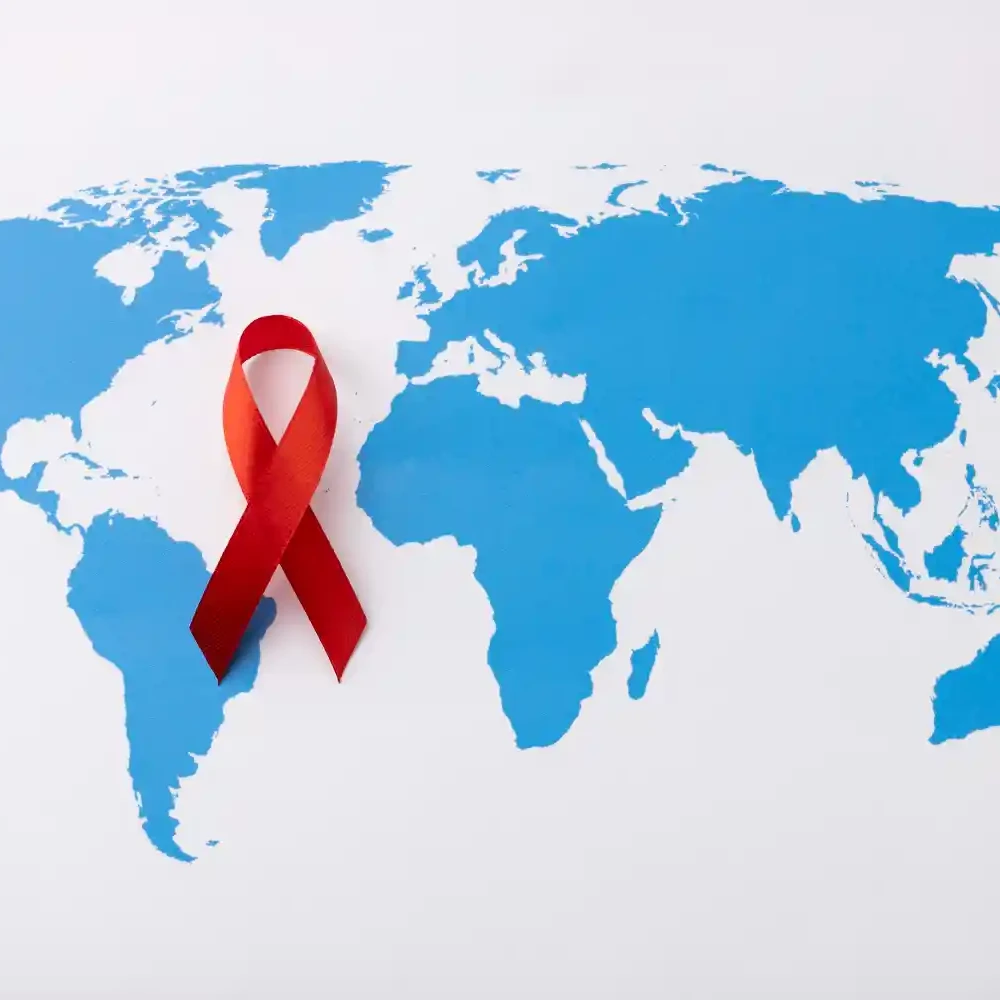In the fight against HIV/AIDS, one of the most significant advancements in medical science has been the development of antiretroviral therapy (ART).
ART is a cornerstone of HIV treatment, offering hope, longevity, and improved quality of life to millions of people living with HIV/AIDS worldwide.
In this post, we’ll explore the key aspects of antiretroviral therapy, including how it works, its benefits, potential side effects, and its role in managing HIV/AIDS.
Antiretroviral therapy (ART)
Antiretroviral therapy (ART), also known as combination therapy or highly active antiretroviral therapy (HAART), involves the simultaneous use of multiple antiretroviral drugs from different classes to achieve potent and durable suppression of the replication of human immunodeficiency virus (HIV).
ART consists of several classes of antiretroviral drugs, each targeting different stages of the HIV life cycle.
These medications work together to reduce HIV viral load, increase CD4 T cell counts, and slow down the progression of HIV disease.
How does ART work?
ART works by targeting specific steps in the HIV life cycle to inhibit viral replication and prevent the virus from infecting new cells.
By blocking key enzymes and proteins essential for HIV replication, ART helps to suppress viral activity and restore immune function.
Adherence to ART
Adherence to ART is critical for its success in controlling HIV infection and preventing disease progression.
It is essential to take ART medications exactly as prescribed by healthcare providers, following the recommended dosing schedule and avoiding missed doses.
Adherence support services, such as medication reminders, pill organisers, and counselling, can help individuals adhere to their ART regimen and achieve optimal treatment outcomes.
The role of ART in HIV treatment
ART is the cornerstone of HIV treatment and is recommended for all individuals living with HIV, regardless of CD4 T cell count or clinical stage.
The goals of ART include:
- Suppressing viral load: ART reduces the amount of HIV in the blood (viral load) to undetectable levels, which helps preserve immune function, prevent disease progression, and reduce the risk of HIV transmission to others.
- Restoring immune function: By suppressing viral replication, ART allows the immune system to recover and rebuild CD4 T cell counts, reducing the risk of opportunistic infections and AIDS-related complications.
- Improving quality of life: ART improves the overall health and quality of life for people living with HIV/AIDS by reducing symptoms, prolonging life expectancy, and enabling individuals to lead productive and fulfilling lives.
- Preventing transmission: Effective ART not only benefits the individual by improving health outcomes but also plays a crucial role in HIV prevention by reducing the risk of HIV transmission to sexual partners and preventing mother-to-child transmission during pregnancy and breastfeeding.
Antiretroviral drugs
Antiretroviral drugs are medications that inhibit the replication of HIV, thereby suppressing the virus and reducing its ability to cause damage to the immune system.
These drugs work by targeting various stages of the HIV replication cycle, disrupting viral replication, and slowing disease progression.
There are several classes of antiretroviral drugs, each with unique mechanisms of action:
1. Nucleoside reverse transcriptase inhibitors (NRTIs)
NRTIs interfere with the action of reverse transcriptase, an enzyme used by HIV to convert its RNA into DNA, a crucial step in the replication process.
By mimicking the building blocks of DNA, NRTIs prevent the virus from creating new copies of itself.
Common NRTIs include zidovudine (AZT), lamivudine (3TC), tenofovir disoproxil fumarate (TDF), and abacavir (ABC).
2. Non-nucleoside reverse transcriptase inhibitors (NNRTIs)
NNRTIs bind to and inhibit reverse transcriptase without requiring activation by cellular enzymes.
By blocking the enzyme’s active site, NNRTIs prevent HIV from replicating its genetic material.
Examples of NNRTIs include efavirenz (EFV), nevirapine (NVP), and rilpivirine (RPV).
3. Protease inhibitors (PIs)
PIs block the activity of protease, another HIV enzyme essential for the production of mature viral particles.
By inhibiting protease, PIs prevent the virus from assembling functional viral proteins, thus inhibiting viral replication.
Common PIs include ritonavir (RTV), atazanavir (ATV), darunavir (DRV), and lopinavir/ritonavir (LPV/r).
4. Integrase strand transfer inhibitors (INSTIs)
INSTIs block the action of integrase, an enzyme that facilitates the integration of viral DNA into the host cell’s genome.
By inhibiting integrase, INSTIs prevent HIV from establishing a permanent infection in host cells.
Examples of INSTIs include raltegravir (RAL), dolutegravir (DTG), and elvitegravir (EVG).
5. Entry inhibitors
Entry inhibitors interfere with the initial stages of HIV infection by preventing the virus from binding to host cell receptors or entering target cells.
Entry inhibitors include fusion inhibitors, such as enfuvirtide (T-20), and CCR5 antagonists, such as maraviroc (MVC).
Potential side effects of ART
While antiretroviral drugs are highly effective in controlling HIV replication and improving health outcomes, they can cause side effects and complications in some individuals.
Common side effects of antiretroviral therapy may include:
- Gastrointestinal symptoms (nausea, vomiting, diarrhoea)
- Lipodystrophy (changes in body fat distribution)
- Metabolic abnormalities (elevated cholesterol, triglycerides, insulin resistance)
- Skin rashes
- Liver toxicity
- Bone and kidney problems
It’s important for individuals starting ART to work closely with their healthcare provider to monitor for side effects, optimise treatment regimens, and address any concerns or complications that may arise.
Adherence to ART is critical for achieving optimal treatment outcomes, as missed doses or incomplete adherence can lead to viral resistance, treatment failure, and disease progression.
Obisesan Damola
Damola is a medical doctor who has worked in the Nigerian healthcare industry for a little over 3 years in a number of primary, secondary, and tertiary hospitals. He is interested in and writes about how technology is helping to shape the healthcare industry. He graduated from the College of Medicine, University of Ibadan, the foremost medical training institution in Nigeria.



